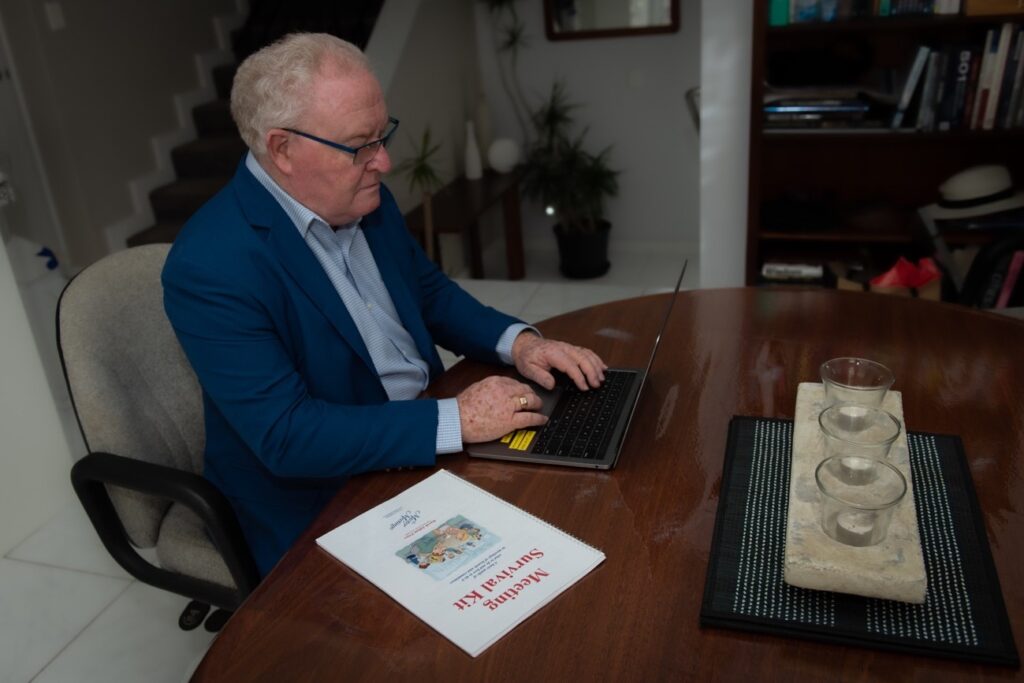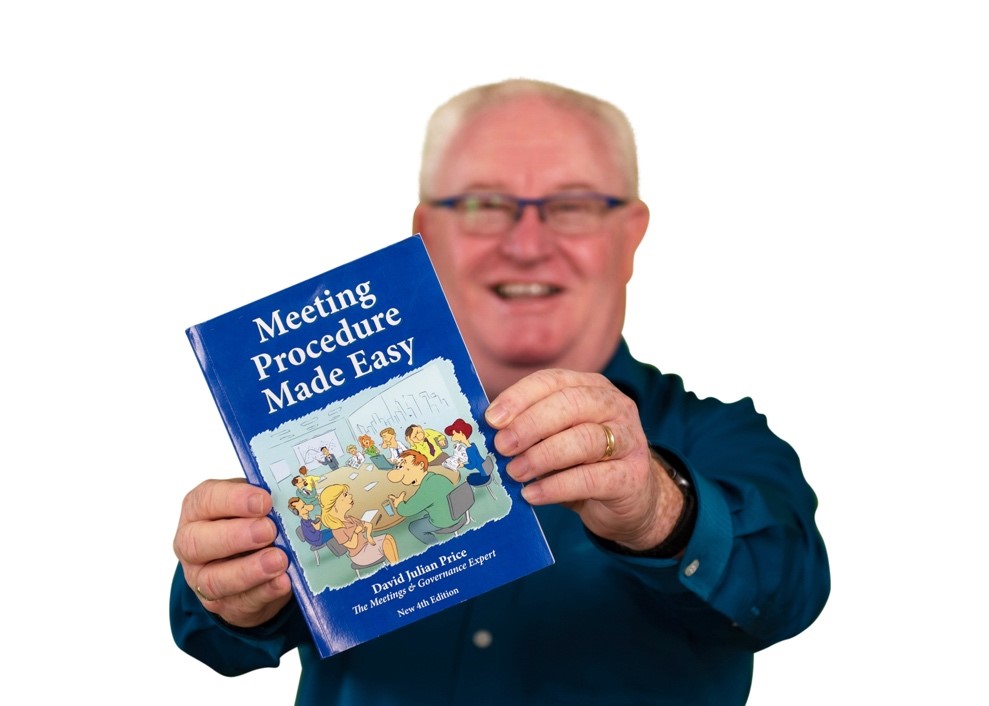- +61 8 6165 8867
- Contact Us
- Testimonials
- Blog
- Home
- Need a Speaker?
- Presentation Skills
- Meetings
- MasterClasses
- About David
Menu
Great leaders run great meetings. Knowing why they exist as an organisation gives the meeting chair focus, and drives them to lead meetings that result in well-considered decisions. They know why they do, what they do.
Great leaders also understand the mechanics of meetings. They use an armoury of tools, techniques and strategies to manage the people as well as the business of the meeting.
Great meetings don’t just happen. The science behind productive meetings involves many meeting techniques and strategies which skilled leaders learn. Part of these skills includes advanced effective communication skills when they’re chairing the meeting and following meeting etiquette protocols.

Drumroll…. It’s all about you being in tune with the group.…
Every meeting has a rhythm and pace, sometimes it’s called the cadence. Surprisingly, it’s not always the person leading the meeting. But it should be. In almost every piece of music, the drummer is the first to start playing. There’s a reason for that. The drummer sets the rhythm. Everyone else takes their timing and rhythm from the drummer.
If you’re the meeting chairperson, see yourself as the drummer.
The other players are important and they all contribute to the meeting in different ways. Some play, then rest, then play again. Others play most of the time. The drummer really earns their keep. They’re like the fuel in your car – no fuel – no go.
So how do you make your role as drummer effective? Well firstly, you need to be attentive to everything that’s happening. Who is saying what, why, where it fits and most importantly – the SO WHAT?
This is called reading the meeting.
You can move things along, or you can slow things down – just like the drummer. You can slow the pace, or increase it.
Every now and then you can add a cymbal – ask a deep dive question to get to the nub of the issue.

Drummers play the key instrument without which the music is empty. The untrained ear cannot hear it. But if it stops, the music loses something – it loses a lot. It’s the bass drum. It’s the drum the drummer is constantly playing with their foot pedal.
If you’re leading the meeting you need to do the same – keep your foot on the pedal. It provides stability. Leaders with presence have a “knowing” about this. Emerging leaders often wonder how they do it. Watch and listen for the silent drum. It’s the key to a well-run meeting.
McKinsey has published a great article on other aspects of meetings.
Every time you speak or chair a meeting your leadership skills are on show
Whether you’re already a leader, or an emerging leader, the chairperson who leads a well-run meeting is highly regarded in all organisations. It’s a high-priority skill set for anyone wishing to climb the corporate ladder. Respect needs to be earned first and establishing your skills as chairperson are a necessary part of growing these skills.
What does it take to be an influential meeting chairperson?
The essential 3 E’s and 3 F’s of a professional meeting leader
* Efficient * Effective * Equitable * Fair * Firm * Focused *
That may sound like a lot of different skill sets, and yes, it is.

David Julian Price has the keys to unlocking all of these parts of the communication skills you need when chairing meetings.
At David’s “Leading Productive Meetings” workshops, you’ll learn:-
Put your trust in a presenter with runs on the board
David is often engaged as an Impartial Chair for difficult and very contentious meetings of up to 100 people or more. When meeting procedures and meeting etiquette must be perfect, organisations put their trust in an experienced meeting chair who understands the process like the back of his hand.
If you want to be the best meeting leader, then learn from the best. His interactive style of coaching increases your leadership skills exponentially.
You’ll also get hands-on training as the meeting chair in mock meetings. All participants will be hot-seated coached in this role, so the learning curve is steep.

Leading meetings training = EXPLAIN * DEMONSTRATE * PRACTICE
3GN philosophy when leading a meeting
The best-run meetings focus on the 3GN philosophy of the ‘Greatest Good for the Greatest Number’.
When this philosophy is in your mind at all times, it assists the direction of the decision making process and outcomes are more inclusive of the wider group.
Great leaders run engaging meetings that have clarity, generate good decisions and focus on results. With the 3GN philosophy as the guide, it will serve you well. Another way of framing how to chair better meetings is….
Doing the right thing… at the right time… in the right way

How to Chair or Run a Meeting – Online Course –
“When my board had some differences of opinion around meetings and procedure, I engaged David as a recognised expert in the field of meetings and governance. He listened to the points of view around the room and then carefully explained what should be done to maintain good governance and gave strategies for the board to achieve the outcomes they wanted in a way that was both effective and efficient.
I’m confident to recommend David Julian Price for any work to do with speaking, governance and meeting procedure and facilitation. He is a true professional supported by solid experience and qualifications.”
Margaret Thomas – JP – Mayor of Kalamunda – CEO/CFO Retirees WA
“David is the absolute superhero in all things meetings and marketing. I have no hesitation in recommending his services to business, government and non-profit organisations. He is the best presenter – as he makes learning fun and interactive. He always brings out the best in professional development. A man of action!”
J Gray – Regional Service Delivery Manager at The Smith Family
“Decisioneering – The art and science of decision making. This was an excellent workshop with practical exercises and worthwhile information delivered in an entertaining manner. Inspired with hands-on tools you want to apply immediately.
I highly recommend it to anyone who wants to know the difference between “Specific” and “Global” or how to find the ideal person to chair meetings and run effective meetings.”
Luiza Gawel – Acting Building Operations Supervisor at City of Rockingham
The Chair
Lead the meeting so it’s fair, firm and focused:
Our Team
David
When you need good solid content with no fluff, David Price is the coach you need. His style is direct, interactive and engaging, ensuring the audience stays awake and leaves with takeaway techniques to implement that day. He is an expert presentation skills coach, meeting procedure sage, author, conference speaker and communications skills educator, able to explain complex ideas in simple terms.

Denise
I’m the ‘talent behind the talent’ at David Julian Price Consulting. When David’s in his zone of genius as a speaking and meetings coach, his eyes light up. I’m not kidding. When you love doing things that most people avoid, you know you’ve found your calling, and it’s a privilege and a delight to support my husband in this way – Denise Price

Every time you speak or lead a meeting your leadership skills are on show.
With his broad skillset as a high-level presentation skills coach, meetings advisor and impartial chair, professional strategic planning facilitator and motivational speaker David builds stronger leaders.
He gives current and emerging leaders the skills and confidence to own the room whenever they speak.

Every time you speak or lead a meeting your leadership skills are on show.
With his broad skillset as a high-level presentation skills coach, meetings advisor and impartial chair, professional strategic planning facilitator and motivational speaker David builds stronger leaders.
He gives current and emerging leaders the skills and confidence to own the room whenever they speak.
Copyright 2023 David Price – All Rights Reserved